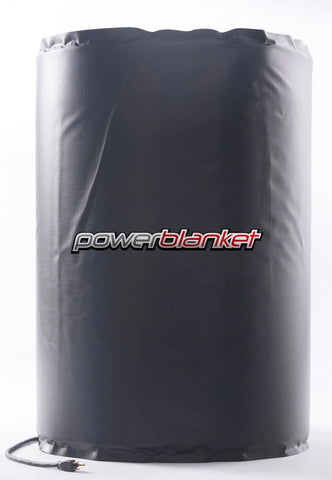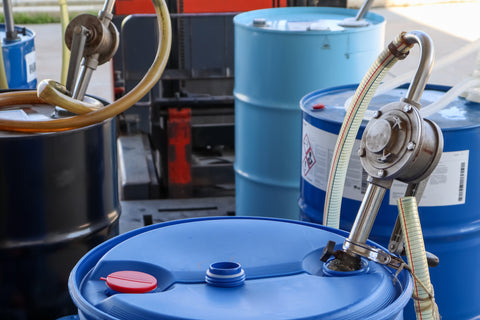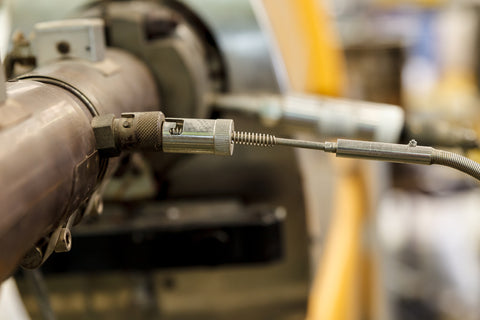Your Complete Guide to Heating a 55-Gallon Plastic Drum Safely and Efficiently Using Heating Elements
Heating drums is a common practice in many industries, and it can be essential for viscosity control, freeze protection, or keeping materials at a consistent temperature. A 55-gallon plastic drum is a popular container for storing and transporting various materials, including chemicals, oils, and food products. However, heating such a large container can be challenging, requiring the right equipment and techniques to do so safely and efficiently.
A drum heater is one of the most effective ways to heat a 55-gallon plastic drum. A drum heater is a heating element designed to fit around the circumference of a drum and provide uniform heating to the material inside. Depending on the type of material and heating rate, you may need to use different heating elements, such as band heaters, immersion heaters, or flexible heating jackets.
In this guide, we'll explore heating a 55-gallon plastic drum safely and efficiently using heating elements. We'll discuss the heating elements available, how to choose the right one for your material, and the steps involved in heating your drum. We'll also cover some safety precautions and tips for maintaining your heating equipment. Whether you're heating chemicals, oils, or other materials, this guide will provide the knowledge you need to heat your 55-gallon plastic drum with confidence and precision.
Types of Heating Elements for 55-Gallon Plastic Drums
Several types of heating elements are available for heating 55-gallon plastic drums, including barrel heaters, immersion heaters, and flexible heating jackets. The type of heating element you choose will depend on the material you're heating, the desired heating rate, and your budget.
Barrel heaters are one of the most popular heating elements for metal drums, but they can also be used with plastic drums. They consist of a metal housing surrounding the drum and a heating element providing uniform heat distribution. One advantage of barrel heaters is that they are easy to install and remove, making them ideal for requiring multiple drums. However, they can result in some heat loss due to the air gap between the heater and the drum.

Immersion heaters are another option for heating 55-gallon drums. They consist of a heating element immersed directly into the material to provide efficient and direct heat transfer. Immersion heaters are ideal for heating materials with high viscosity or for applications where the product temperature needs to be closely controlled. However, they can be more expensive than barrel heaters and require more maintenance.
Flexible heating jackets are a third option for heating 55-gallon plastic drums. They have a flexible heating element wrapped around the drum and secured with adjustable straps. Flexible heating jackets provide direct contact with the drum, which minimizes heat loss and ensures uniform heating. They are also easy to install and remove, making them ideal for situations where you need to heat multiple drums. However, they can be more expensive than barrel heaters and may not be as durable.
Safety Precautions When Using Heating Elements for 55-Gallon Plastic Drums
Using heating elements to heat a 55-gallon plastic drum can pose some safety risks, such as fire hazards, electrical shock, or damage to the drum or contents. To ensure safe and efficient heating, it's important to follow these safety precautions:
Use a thermostat or temperature controller: A thermostat or temperature controller can help you maintain a safe and consistent temperature and avoid overheating the contents. Set the temperature according to the manufacturer's recommendations and monitor it regularly.
Don't leave the heater unattended: It's important to monitor the heating process and never leave the heater unattended, especially if you're heating flammable or combustible materials. If you need to leave the area, turn off the heater or set the alarm to alert you if the temperature exceeds a certain level.
Avoid contact with the heating element: Heating elements can reach high temperatures and pose a burn or fire hazard. Always use protective gear, such as gloves and goggles, and avoid touching the heating element or the heated surface of the drum.
Inspect the equipment regularly: Before and after each use, inspect the heating element and the drum for signs of damage, wear, or malfunction. Replace damaged parts or equipment and ensure all connections are secure and grounded.
Use a GFCI or circuit breaker: A ground fault circuit interrupter (GFCI) or circuit breaker can protect you from electrical shock or fire hazards caused by a malfunctioning or overloaded circuit. Test the GFCI regularly and replace it if it doesn't work properly.
By following these safety precautions, you can minimize the risk of accidents and ensure the safe and efficient heating of your 55-gallon plastic drum. In the next section, we'll walk you through the steps for heating a drum using heating elements.
How to Heat a 55 Gallon Plastic Drum
Heating a 55-gallon plastic drum using heating elements can be done in several ways, depending on the type of equipment you have and the material you're heating. Here are the general steps for heating a drum using heating elements:
Choose the right heating element: As we discussed earlier, you need to choose a heating element suitable for your material and heating rate. Make sure to follow the manufacturer's instructions for installation and use.
Clean and prepare the drum: Before heating the drum, clean it thoroughly and remove any residues or debris that may affect the quality of the material. Also, ensure the drum is dry and free of any moisture that may cause electrical issues.
Install the heating element: Depending on your desired heating element, you need to install it according to the manufacturer's instructions. For band heaters, wrap the heater around the circumference of the drum and secure it with clamps or straps. For drum heaters, insert the heater inside the drum and ensure it's in contact with the bottom of the drum. Place the heater inside the drum for immersion heaters and ensure it's fully immersed in the material.
Connect the heating element to the power source: Follow the manufacturer's instructions for connecting the heating element to the power source. Use the appropriate voltage and wattage for your electrical system, and avoid overloading the circuit.

Monitor the temperature: Once the heating element is connected, turn on the power and monitor the temperature using a thermostat or temperature controller. Adjust the temperature as needed and ensure it doesn't exceed the safe range for your material.
Check the heating progress: Depending on the type of material and heating rate, you need to monitor the heating progress and ensure it's heating evenly and at the desired rate. You may need to stir the material or adjust the heating element position to ensure even heating.
Turn off the heating element: Once the material is heated to the desired temperature, turn off the heating element and disconnect it from the power source. Follow the manufacturer's instructions for cooling and removing the heating element from the drum.
Following these steps and the safety precautions we discussed, you can heat a 55-gallon plastic drum safely and efficiently using heating elements. The next section will discuss some tips for maintaining your heating equipment and ensuring its longevity.
Heating a 55-gallon plastic drum can be challenging, but with the right heating elements and equipment, it can be done safely and efficiently. By following the guidelines we've outlined in this article, you can choose the right heating elements for your material, ensure safe heating practices, and monitor your drum's temperature and heating progress.
While we haven't covered every aspect of heating a 55-gallon plastic drum using heating elements, we hope this guide has given you a good foundation for getting started. Whether you're heating chemicals, oils, or other materials, it's important always to prioritize safety and follow the manufacturer's instructions for installing, using, and maintaining your heating equipment.
If you're unsure which heating elements to use or how to heat your drum safely and efficiently, reach out, and our team will help you find the correct product for your application. Be sure to check out our various drum and barrel warmers here.







